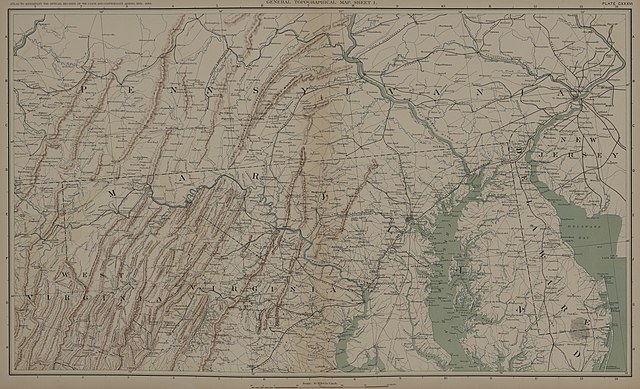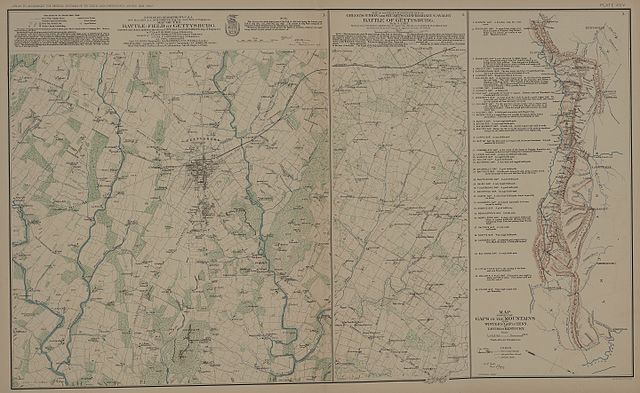Alfred Pleasonton was a United States Army officer and major general of volunteers in the Union cavalry during the American Civil War. He commanded the Cavalry Corps of the Army of the Potomac during the Gettysburg campaign, including the largest predominantly cavalry battle of the war, Brandy Station. In 1864, he was transferred to the Trans-Mississippi theater, where he defeated Confederate General Sterling Price in two key battles, including the Battle of Mine Creek, the second largest cavalry battle of the war, effectively ending the war in Missouri. He was the son of Stephen Pleasonton and younger brother of Augustus Pleasonton.
Alfred Pleasonton, portrait by Mathew Brady
General Pleasonton (right) and Captain George Custer (left) on horseback in Falmouth, Virginia
General Alfred Pleasonton and staff in Warrenton, Virginia
General Pleasonton in Warrenton, Virginia
The Gettysburg campaign was a military invasion of Pennsylvania by the main Confederate army under General Robert E. Lee in summer 1863. It was the first time during the war the Confederate Army attempted a full-scale invasion of a free state. The Union won a decisive victory at Gettysburg, July 1–3, with heavy casualties on both sides. Lee managed to escape back to Virginia with most of his army. It was a turning point in the American Civil War, with Lee increasingly pushed back toward Richmond until his surrender in April 1865. The Union Army of the Potomac was commanded by Maj. Gen. Joseph Hooker and then by Maj. Gen. George G. Meade.
Opposing commanders George G. Meade (left) and Robert E. Lee (right)
Northern Virginia, Maryland and Pennsylvania (1861–1865)
Battlefield of Gettysburg (1863)







